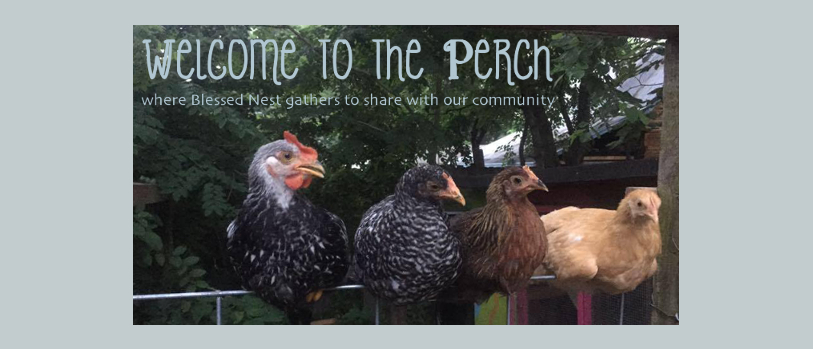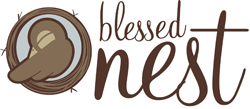
Many of the Thursday 13's will reflect my journey while nursing. Today's 13 tips are a reflection of my difficulty with returning Mastitis (breast infection) while nursing. It is actually the main reason I called my friend Heather begging for her to design a nursing pillow that would be helpful. These are tips that were helpful for me during this process!
1.Mastitis is the clinical term for a breast infection.(following are tips if this becomes a problem for you.) This was a huge problem while nursing my second daughter!
2. Wearing your baby (in a sling)helps to encourage nursing often which helps to minimize breast infection and is also helpful in making her more independent as she gets older.
3.Abrupt weaning can lead to mastitis. When a mother's milk supply is decreased slowly, as in gradual weaning, her breasts usually adjust without causing problems. However, when breastfeeding is cut back significantly over a short period of time, she is more likely to experience overfull breasts.
4.Teething. When a baby cannot tolerate long feedings because the sucking causes pain, too much milk may remain in the mother's breasts so she may need to hand express or pump her milk.
5.Incorrect Positioning or Suckling. When a baby is not positioned at the breast correctly or is unable to suck efficiently, the milk flow is reduced; plugged ducts and mastitis may follow. In some cases of improper positioning or suckling, the mother's nipples become sore or cracked. Painful nipples can cause a mother to avoid breastfeeding on the sore side.
6.Yeast Infections. Yeast (fungus) infections in the mother or thrush in the baby's mouth can lead to breast inflammation and possibly mastitis. A woman who treats mastitis with antibiotics and does not see improvement within twenty-four hours may want to call her doctor and request that a culture be done on her breast milk and baby's mouth to check for the possibility of a yeast infection
7.Missed Feedings and Irregular Breastfeeding Patterns. When babies begin to sleep through the night, the mother's breasts can become overfull, leading to engorgement, plugged ducts, and mastitis. When an older baby breastfeeds one night and sleeps through the next, the mother's breasts may become stimulated and then engorged, which could cause problems. In addition, when a mother's schedule becomes so busy that she misses feedings or does not breastfeed long enough, she may experience overfull or engorged breasts that can lead to problems with the milk flow.
8.Restrictive Clothing. A bra that is too tight or clothing that applies pressure to the breasts can restrict the flow of milk. "Nursing bras should be properly fitted. The mother should lean forward when putting on a bra so that the entire breast falls in the bra cup. No breast tissue should be pinched under the edge of the cup or bra. This is especially important when wearing an under wire bra" (Gubala and Berg, 1988). Other types of clothing that can restrict milk flow and cause mastitis are heavy shoulder purses or diaper bags, baby carriers, breast pads, and tight bathing suits
9.Recurrent mastitis can be a devastating blow to a woman's breastfeeding experience. While the highly dedicated mother may struggle through many bouts of mastitis without fear of failure, trying to breastfeed while frequently experiencing sore breasts or feeling weak and ill from mastitis leaves many women questioning their commitment to breastfeeding. In addition, the mother whose milk tastes salty from the higher sodium content during a bout of mastitis may get frustrated trying to keep her baby interested in breastfeeding long enough to soften her overfull breasts.
10.women with recurrent mastitis to check their breasts regularly for any signs of plugged ducts and watch carefully for flu-like symptoms.
11.Frequent breastfeeding to keep breast soft.
12.Apply heat and use gentle massage.
13.Resting in bed if at all possible and use of antibiotics if fever persists for more than 24 hours.
Many of these specific tips are from the
La Leche League
 Saturday, February 16, 2008 at 04:05AM
Saturday, February 16, 2008 at 04:05AM  We are thrilled to be attending the NATURAL LIVING CONFERENCE sponsored by The Holistic Moms Network (HMN) who is a rapidly-growing non-profit support and resource network for moms interested in natural health, holistic living, and mindful parenting. The conference will be on Saturday, October 13, 2007 from 8:30-4:30 at the Sheraton Crossroads Hotel, Mahwah, NJ
We are thrilled to be attending the NATURAL LIVING CONFERENCE sponsored by The Holistic Moms Network (HMN) who is a rapidly-growing non-profit support and resource network for moms interested in natural health, holistic living, and mindful parenting. The conference will be on Saturday, October 13, 2007 from 8:30-4:30 at the Sheraton Crossroads Hotel, Mahwah, NJ
 Heather and the girls are busy getting ready for our big day.
Heather and the girls are busy getting ready for our big day.
 We donated 350 adorable washcloths with a discount gift card attached. They will be placed in the goody bags handed out to all who register and attend.
We donated 350 adorable washcloths with a discount gift card attached. They will be placed in the goody bags handed out to all who register and attend.  We just received an e-mail today that they arrived safely. We will have more details about the conference in the up coming weeks. One of my favorite new parenting authors will be speaking, SO I have to remember to tell Heather that I want a souvenir, signed book from Elizabeth Pantley!
We just received an e-mail today that they arrived safely. We will have more details about the conference in the up coming weeks. One of my favorite new parenting authors will be speaking, SO I have to remember to tell Heather that I want a souvenir, signed book from Elizabeth Pantley!






